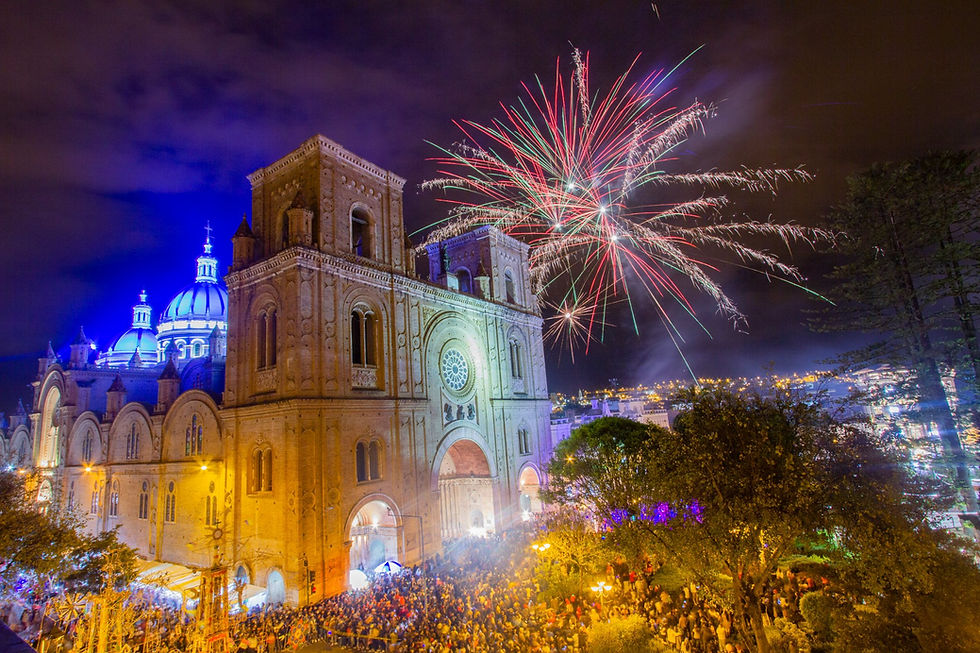Ecuador's Coffee Renaissance Exploring Regional Flavors and Growing Impact on the Global Stage
- Ecuador Expat Journeys

- Oct 1
- 4 min read
Ecuador is experiencing a coffee renaissance, transforming itself into a standout player on the international coffee scene. With its diverse geography and unique microclimates, the country produces an impressive variety of coffee beans that cater to many tastes. From the full-bodied Arabica of the coastal regions to the delicate specialty coffees of the highlands, Ecuador's coffee offerings boast flavors as rich and varied as its landscapes. In this post, you will discover the key coffee-producing regions of Ecuador, their distinct flavor profiles, and how they contribute to the global coffee market.
Ecuador's Lowland Coastal Region
The lowland coastal region of Ecuador, including provinces like Manabí, Guayas, and El Oro, plays a significant role in the country's coffee production. Here, Arabica beans thrive at lower altitudes, typically between 600 and 800 meters. The warm climate and fertile soil create excellent conditions for coffee growth, leading to full-bodied brews with intense flavors.
Coastal coffee often features rich, robust tastes and notes of chocolate and caramel. For example, a popular variety from Guayas, known for its bold character, is often used in espresso blends, appealing to those who enjoy strong cups paired with milk or cream. In 2022, exports from the coastal region alone accounted for over 30% of Ecuador's total coffee exports, highlighting its importance to the country's economy.

Robust Coffee of Northern Highlands Region
Traveling north into the Highlands, which includes provinces like Pichincha, Imbabura, and Carchi, introduces a new coffee landscape. This region is famous for high-altitude Arabica beans, typically grown at elevations greater than 1,200 meters. Cooler temperatures and rich volcanic soil contribute to a balanced coffee profile with bright acidity and sweet complexity.
In particular, the Intag Valley in Pichincha stands out for its specialty coffee production, where farmers cultivate beans with floral notes and fruity undertones. In a 2021 cupping competition, beans from this valley scored over 90 points, a mark of quality that has attracted coffee aficionados around the globe. Coffee from the Intag Valley also received the Ernesto Illy International Coffee Award in 2019 for outstanding flavors and their commitment to quality and sustainable practices. The Northern Highlands' coffee appeals to those who appreciate nuanced cups that highlight intricate flavors and grower craftsmanship.
Southern Highlands Sublime Flavors
The Southern Highlands, which includes provinces like Loja, Azuay, and Zamora Chinchipe, is often described as the heart of Ecuador's specialty coffee scene. This region is celebrated for high-altitude coffee varieties such as Typica, Caturra, Bourbon, and the coveted Gesha. The unique growing conditions at elevations of 1,500 meters and above result in extraordinary flavor profiles.
Loja, in particular, is recognized for its delicate aroma and clean cup profile, commonly showcasing citrus and stone fruit notes. In 2023, a coffee from Finca La Noria in Loja won first place in the Cup of Excellence, a global coffee festival, further solidifying the region's reputation for quality. The Southern Highlands' commitment to high standards has garnered international recognition, making it an essential destination for any coffee lover seeking refined and elegant brews.
Hybrid Coffee Varieties of the Amazon Region
As we venture into the Amazon region, which includes provinces like Napo and Orellana, the coffee landscape shifts yet again. This area primarily produces Robusta coffee, known for its higher caffeine content and bold flavor, often used in instant coffee. However, some innovative farms in the Amazon also cultivate rare Arabica varieties that boast unexpected flavors.
The Amazon coffee is characterized by its earthy and robust taste, adding a unique touch to Ecuador's overall coffee offerings. For example, certain farms have introduced hybrids that combine the resilience of Robusta with the quality of Arabica, showing great promise for future growth. While Amazonian coffees may not enjoy the same level of acclaim as those from the highlands, they play a crucial role in diversifying Ecuador's coffee portfolio, contributing to about 15% of the country's production by 2023.

Rare and Unique Coffee of the Galapagos Islands
The Galapagos Islands, particularly Santa Cruz and San Cristobal, provide a truly unique coffee experience. Grown on fertile volcanic soil, the coffee from this region is well-balanced and less acidic, appealing to those who prefer a smoother cup. The rarity of Galapagos coffee, along with its distinct soil, topography, and climate, leads to premium prices in the international market, with some varieties fetching up to 50% more than mainland coffees.
The flavor profile of Galapagos coffee typically includes notes of chocolate and nuts, with a creamy mouthfeel that makes it stand out. A recent tasting event showcased these flavors to a global audience, highlighting how Galapagos coffee can elevate the overall coffee experience. This exceptional quality has made Galapagos coffee a favorite among enthusiasts eager to explore the diverse flavors of Ecuador.
The Journey Ahead
Ecuador's rise in the coffee world is a testament to the country's rich agricultural heritage and its commitment to quality. With unique coffee-producing regions each offering distinct flavor profiles, Ecuadorian coffee is gaining recognition among coffee lovers and world travelers alike. Whether you enjoy the bold brews of the lowland coastal region, the balanced complexity of the Northern Highlands, or the refined elegance of the Southern Highlands, there is an Ecuadorian coffee that will suit your taste.
As you discover the world of Ecuadorian coffee, you will not only enjoy new flavors but also support the farmers and communities that contribute to this vibrant industry. So, the next time you sip a cup of Ecuadorian coffee, take a moment to appreciate the journey it has taken from the lush landscapes of Ecuador to your cup. Happy brewing!

